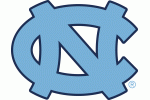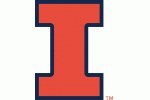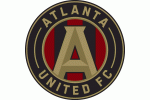Aesopian
Hooters Waitress
- Joined:
- Jan 6, 2015
- Posts:
- 16,372
- Liked Posts:
- 8,783
- Location:
- Jupiter
My favorite teams
https://www.google.com/amp/s/www.theringer.com/platform/amp/nfl/2017/8/18/16165712/how-to-fix-nfl-divisions
Too often, a subpar team heads to the postseason while a better squad stays home. The league can fix that, but it’ll take a bold approach.
Positional distinctions are disappearing. Rushing yards are losing meaning. And offensive and defensive schemes are shifting from game to game — if not drive to drive. The most popular sport in America is changing faster than it ever has before — yet the way we talk about the game has largely stayed the same. It’s time for the conversation to catch up to the shifting concepts redefining front offices and gameplay nationwide. So welcome to The Ringer’s You Don’t Know Football Week, where we’ll explore and attempt to better understand the evolutions already occurring on the gridiron — and the reboots we’d like to see make their way to the game next.
The NFL prides itself on parity, and often boasts about its ability to steadily churn out new playoff teams every year. Part of the frequent playoff turnover can be attributed to the league’s current divisional structure and playoff-seeding system, which features eight four-team divisions grouped into two conferences—with the league awarding the first eight playoff spots to its division winners and an additional four to wild-card squads. But a continuous cycle of new playoff teams doesn’t mean the current divisional structure is working, nor does it make the playoff-seeding system derived from it fair. Too often it benefits teams in weak divisions, and it dilutes the postseason product.
The current setup places a heavy weight on divisional success, where intradivision opponents account for six games out of an already-short 16-game slate, and that leads to a problem: There’s a lot of volatility in the quality of each division. A concentration of three or four weak teams in a given division can dramatically impact the playoff field. As a result, the league isn’t consistent in sending its best regular-season performers into the postseason: In 2010, the 7-9 Seahawks won the NFC West and hosted a playoff game against an 11-win Saints team, while a pair of 10-win teams missed the postseason and watched from home. In 2011, an 8-8 Broncos squad snuck into the playoffs over a nine-win Titans club. In 2013, an 8-7-1 Packers team got in and left the 10-win Cardinals on the couch. In 2014, a 7-8-1 Panthers squad won the NFC South and went to the playoffs while a 10-win Eagles club missed out. And in 2015, a 9-7 Texans team got into the playoffs over a 10-win Jets squad.
Secondary to the postseason-seeding problem (or, maybe for some, more important than), the heavy emphasis the league places on divisional games means that in weak divisions, there’s a lot of really bad football. Sloppy, untalented teams playing similarly sloppy, untalented teams twice a year isn’t very exciting, and if every team in a division is bad, that means about 40 percent of each of those four teams’ schedules can be comprised of bland, boring ball on both sides. No one outside of Jacksonville or Tennessee wanted to watch the Jags play the Titans in any of their eight meetings from 2012 to 2015. The problem isn’t just that bad teams play each other, it’s that the bad teams play the same bad teams over and over again. Honestly, this idea might even translate to the league’s strongest divisions: There’s probably plenty of fans out there that are just flat sick of watching the same matchups—I know most of us here in Seattle wouldn’t mourn much if the Seahawks never played the Rams again.
Sure, there are certainly advocates of the league’s current structure. But odds are a good portion of them are probably (a) Seahawks fans who buried the shame of that 7-9 playoff berth in 2010 to thoroughly enjoy Marshawn Lynch’s Beast Quake runand upset over the Saints, (b) Patriots fans whose team has dominated a consistently weak AFC East to the tune of 14 division titles in the past 16 years, (c) a current Texans fan that loves seeing their mediocre team go to the playoffs every year thanks to their crappy divisional adversaries, and (d) fans of the Giants, Eagles, Redskins, and Cowboys who only watch football in order to express their deep-seated loathing for one another. All those points of view are understandable.
But maybe there’s just a better way of doing it. Maybe it doesn’t make any sense for NFL teams to play each division opponent twice every year. And maybe it’s better to send the best regular-season performers to the playoffs.
Say the NFL embraced a divisional structure similar to the NHL’s, ditching the AFC and NFC to come up with a brand-new approach. Here’s how it might look, grouped by Eastern and Western conferences and separated divisionally by region. Each squad would face off against divisional opponents once per season, along with a rotational mix of nine non-division games on the slate.
Eastern Football Conference (EFC)Atlantic Division
Baltimore Ravens
Buffalo Bills
Cleveland Browns
New England Patriots
New York Jets
New York Giants
Philadelphia Eagles
Pittsburgh Steelers
Made up of teams primarily in the Northeast, this new division would retain the storied Jets-Patriots rivalry (sorry, and you’re welcome) and add to the New England–Pittsburgh feud, while at the same time giving the Patriots a few more divisional challenges. They’d get yearly matchups against the Ravens, Eagles, and their postseason nemesis, the Giants. Add in the Bills, Jets, and Browns, and you’ve got a well-rounded, diverse, and competitive group.
The quarterback position is well represented, with Tom Brady, Eli Manning, and Ben Roethlisberger headlining, Carson Wentz (who’s often compared to Big Ben) and Tyrod Taylor on the rise, and DeShone Kizer boasting plenty of future potential. Also, Joe Flacco.
There’s offensive star power at the skill positions, with Rob Gronkowski in New England, Odell Beckham Jr. in New York, Antonio Brown and Le’Veon Bell in Pittsburgh, and Alshon Jeffery in Philly. But there’s plenty of defense to counter: the Giants (second), Eagles (fourth), Ravens (sixth), and Steelers (11th), all finished in the top 11 in Football Outsiders defensive DVOA last year, while New England allowed the fewest points in the league.
South Division
Atlanta Falcons
Carolina Panthers
Jacksonville Jaguars
Houston Texans
Miami Dolphins
New Orleans Saints
Tampa Bay Buccaneers
Washington Redskins
With mostly teams from the Southeast (sorry, Washington and Houston), this division would retain a few well-maintained rivalries within the Falcons-Panthers-Saints trio, plus hopefully create a few Florida-centric grudge matches between the Jaguars, Dolphins, and Buccaneers. Throw in the Redskins and Texans, and baby, you’ve got a stew goin’.
With the potentially dominant J.J. Watt–led Texans unit, the Luke Kuechly–led Panthers squad, the Calais Campbell–led Jaguars group, and the Ndamukong Suh–led Dolphins crew, there’s plenty of hard-nosed defenses in this division. There’d be offensive firepower, too, with the Falcons (first), Redskins (fifth), and Saints (sixth) all finishing last season in the top 10, per DVOA. At quarterback, it would feature the two most recent league MVPs in Matt Ryan and Cam Newton, a former Super Bowl MVP in Drew Brees, a pair of young gunslingers in Jameis Winston and Kirk Cousins, and an exciting rookie in Deshaun Watson. Plus, Jay Cutler! It’d also showcase Julio Jones, Mike Evans, DeSean Jackson, Jarvis Landry, DeAndre Hopkins, Terrelle Pryor, Michael Thomas, Kelvin Benjamin, and a slew of talented backs, including rookie Leonard Fournette.
Western Football Conference (WFC)Central Division
Chicago Bears
Cincinnati Bengals
Detroit Lions
Green Bay Packers
Indianapolis Colts
Kansas City Chiefs
Minnesota Vikings
Tennessee Titans
The good old heartland—amber waves of grain, endless cornfields, thousands of lakes, and the unending rivalries between the Packers, Bears, Vikings, and Lions. Along with those former NFC North members, the Central Division would inherit four tough, quality teams in the Chiefs, Titans, Bengals, and Colts.
There’d be plenty of offense in this division—the Packers (fourth), Titans (ninth), Bengals (11th), Colts (12th), and Chiefs (13th) finished in the top 13 in offensive DVOA last year, with five in the bottom 13 in defensive DVOA (the Lions were dead last, with the Colts 29th, Titans 24th, Bears 23rd, and Packers 20th). Aaron Rodgers would be the clear standout shot-caller and superstar, but Matt Stafford, Andrew Luck, and Andy Dalton are all established franchise signal-callers with seven Pro Bowl appearances between them. The transition from Alex Smith to Patrick Mahomes II (whenever it comes) will be worth watching, and third-year pro Marcus Mariota looks to be developing into one of the most dynamic players in the league. Also, add in Bears rookie Mitchell Trubisky, who could be a major X factor in the division if he turns out how Chicago envisions.
There’s plenty of pass-catching star power to go along with that, with Travis Kelce and Tyreek Hill in Kansas City; Jordy Nelson, Randall Cobb, and Martellus Bennett in Green Bay; Stefon Diggs in Minnesota; T.Y. Hilton in Indy; Eric Decker in Tennessee; and A.J. Green and Tyler Eifert in Cincy, among others. And don’t worry, there are a few talented defensive groups: The Chiefs have a top-tier secondary and a few stud pass rushers, and the same could be said about the Vikings and Bengals.
Pacific Division
Arizona Cardinals
Dallas Cowboys
Denver Broncos
Los Angeles Chargers
Los Angeles Rams
Oakland Raiders
San Francisco 49ers
Seattle Seahawks
Made up of teams from the NFC West and AFC West (and Dallas), this could be another division with a great mix of styles that retains most of the current rivalries, renews a few old ones (from the old AFC West), and creates a few more—like Seahawks-Cowboys. There’d be a couple of offensive standouts—Dallas (third in offensive DVOA last year) and Oakland (eighth)—and a slew of top defenses in the Broncos (first in defensive DVOA), Cardinals (third), Seahawks (fifth), and Chargers (seventh). There’s a good mix of old-guard signal-callers in Philip Rivers and Carson Palmer and the next class in Russell Wilson, Dak Prescott, and Derek Carr.
The division would feature plenty of offensive talent in Demaryius Thomas and Emmanuel Sanders in Denver, Dez Bryant in Dallas, Jimmy Graham and Doug Baldwin in Seattle, Larry Fitzgerald in Arizona, Amari Cooper and Michael Crabtree in Oakland—and the list goes on.
Under this system, there would still be 12 playoff squads. The seeding would go by final record, and in this scenario, records would be more indicative of a team’s real talent because divisions will have their importance flattened and the squads will play a larger variety of opponents. We could keep the same playoff tiebreakers, with a provision that maintains some emphasis on the importance of winning your division, giving the first tiebreaker to a division winner (i.e., if two teams from different divisions finish with the same record, the higher seed would go to the team that won its division, if applicable). The top two seeds from each conference still get first-round byes. From there, nothing changes. Except, of course, with this setup, the league would reward the six best teams from each conference with playoff spots, as it should.
Changing things up might lead to a little less postseason turnover—but ask the Bills, Browns, Rams, or Jaguars if the current way is really helping them. What’s more important is that this type of shake-up would create a much greater variety of regular-season matchups and it would almost surely lead to higher-quality postseason football.
Too often, a subpar team heads to the postseason while a better squad stays home. The league can fix that, but it’ll take a bold approach.
Positional distinctions are disappearing. Rushing yards are losing meaning. And offensive and defensive schemes are shifting from game to game — if not drive to drive. The most popular sport in America is changing faster than it ever has before — yet the way we talk about the game has largely stayed the same. It’s time for the conversation to catch up to the shifting concepts redefining front offices and gameplay nationwide. So welcome to The Ringer’s You Don’t Know Football Week, where we’ll explore and attempt to better understand the evolutions already occurring on the gridiron — and the reboots we’d like to see make their way to the game next.
The NFL prides itself on parity, and often boasts about its ability to steadily churn out new playoff teams every year. Part of the frequent playoff turnover can be attributed to the league’s current divisional structure and playoff-seeding system, which features eight four-team divisions grouped into two conferences—with the league awarding the first eight playoff spots to its division winners and an additional four to wild-card squads. But a continuous cycle of new playoff teams doesn’t mean the current divisional structure is working, nor does it make the playoff-seeding system derived from it fair. Too often it benefits teams in weak divisions, and it dilutes the postseason product.
The current setup places a heavy weight on divisional success, where intradivision opponents account for six games out of an already-short 16-game slate, and that leads to a problem: There’s a lot of volatility in the quality of each division. A concentration of three or four weak teams in a given division can dramatically impact the playoff field. As a result, the league isn’t consistent in sending its best regular-season performers into the postseason: In 2010, the 7-9 Seahawks won the NFC West and hosted a playoff game against an 11-win Saints team, while a pair of 10-win teams missed the postseason and watched from home. In 2011, an 8-8 Broncos squad snuck into the playoffs over a nine-win Titans club. In 2013, an 8-7-1 Packers team got in and left the 10-win Cardinals on the couch. In 2014, a 7-8-1 Panthers squad won the NFC South and went to the playoffs while a 10-win Eagles club missed out. And in 2015, a 9-7 Texans team got into the playoffs over a 10-win Jets squad.
Secondary to the postseason-seeding problem (or, maybe for some, more important than), the heavy emphasis the league places on divisional games means that in weak divisions, there’s a lot of really bad football. Sloppy, untalented teams playing similarly sloppy, untalented teams twice a year isn’t very exciting, and if every team in a division is bad, that means about 40 percent of each of those four teams’ schedules can be comprised of bland, boring ball on both sides. No one outside of Jacksonville or Tennessee wanted to watch the Jags play the Titans in any of their eight meetings from 2012 to 2015. The problem isn’t just that bad teams play each other, it’s that the bad teams play the same bad teams over and over again. Honestly, this idea might even translate to the league’s strongest divisions: There’s probably plenty of fans out there that are just flat sick of watching the same matchups—I know most of us here in Seattle wouldn’t mourn much if the Seahawks never played the Rams again.
Sure, there are certainly advocates of the league’s current structure. But odds are a good portion of them are probably (a) Seahawks fans who buried the shame of that 7-9 playoff berth in 2010 to thoroughly enjoy Marshawn Lynch’s Beast Quake runand upset over the Saints, (b) Patriots fans whose team has dominated a consistently weak AFC East to the tune of 14 division titles in the past 16 years, (c) a current Texans fan that loves seeing their mediocre team go to the playoffs every year thanks to their crappy divisional adversaries, and (d) fans of the Giants, Eagles, Redskins, and Cowboys who only watch football in order to express their deep-seated loathing for one another. All those points of view are understandable.
But maybe there’s just a better way of doing it. Maybe it doesn’t make any sense for NFL teams to play each division opponent twice every year. And maybe it’s better to send the best regular-season performers to the playoffs.
Say the NFL embraced a divisional structure similar to the NHL’s, ditching the AFC and NFC to come up with a brand-new approach. Here’s how it might look, grouped by Eastern and Western conferences and separated divisionally by region. Each squad would face off against divisional opponents once per season, along with a rotational mix of nine non-division games on the slate.
Eastern Football Conference (EFC)Atlantic Division
Baltimore Ravens
Buffalo Bills
Cleveland Browns
New England Patriots
New York Jets
New York Giants
Philadelphia Eagles
Pittsburgh Steelers
Made up of teams primarily in the Northeast, this new division would retain the storied Jets-Patriots rivalry (sorry, and you’re welcome) and add to the New England–Pittsburgh feud, while at the same time giving the Patriots a few more divisional challenges. They’d get yearly matchups against the Ravens, Eagles, and their postseason nemesis, the Giants. Add in the Bills, Jets, and Browns, and you’ve got a well-rounded, diverse, and competitive group.
The quarterback position is well represented, with Tom Brady, Eli Manning, and Ben Roethlisberger headlining, Carson Wentz (who’s often compared to Big Ben) and Tyrod Taylor on the rise, and DeShone Kizer boasting plenty of future potential. Also, Joe Flacco.
There’s offensive star power at the skill positions, with Rob Gronkowski in New England, Odell Beckham Jr. in New York, Antonio Brown and Le’Veon Bell in Pittsburgh, and Alshon Jeffery in Philly. But there’s plenty of defense to counter: the Giants (second), Eagles (fourth), Ravens (sixth), and Steelers (11th), all finished in the top 11 in Football Outsiders defensive DVOA last year, while New England allowed the fewest points in the league.
South Division
Atlanta Falcons
Carolina Panthers
Jacksonville Jaguars
Houston Texans
Miami Dolphins
New Orleans Saints
Tampa Bay Buccaneers
Washington Redskins
With mostly teams from the Southeast (sorry, Washington and Houston), this division would retain a few well-maintained rivalries within the Falcons-Panthers-Saints trio, plus hopefully create a few Florida-centric grudge matches between the Jaguars, Dolphins, and Buccaneers. Throw in the Redskins and Texans, and baby, you’ve got a stew goin’.
With the potentially dominant J.J. Watt–led Texans unit, the Luke Kuechly–led Panthers squad, the Calais Campbell–led Jaguars group, and the Ndamukong Suh–led Dolphins crew, there’s plenty of hard-nosed defenses in this division. There’d be offensive firepower, too, with the Falcons (first), Redskins (fifth), and Saints (sixth) all finishing last season in the top 10, per DVOA. At quarterback, it would feature the two most recent league MVPs in Matt Ryan and Cam Newton, a former Super Bowl MVP in Drew Brees, a pair of young gunslingers in Jameis Winston and Kirk Cousins, and an exciting rookie in Deshaun Watson. Plus, Jay Cutler! It’d also showcase Julio Jones, Mike Evans, DeSean Jackson, Jarvis Landry, DeAndre Hopkins, Terrelle Pryor, Michael Thomas, Kelvin Benjamin, and a slew of talented backs, including rookie Leonard Fournette.
Western Football Conference (WFC)Central Division
Chicago Bears
Cincinnati Bengals
Detroit Lions
Green Bay Packers
Indianapolis Colts
Kansas City Chiefs
Minnesota Vikings
Tennessee Titans
The good old heartland—amber waves of grain, endless cornfields, thousands of lakes, and the unending rivalries between the Packers, Bears, Vikings, and Lions. Along with those former NFC North members, the Central Division would inherit four tough, quality teams in the Chiefs, Titans, Bengals, and Colts.
There’d be plenty of offense in this division—the Packers (fourth), Titans (ninth), Bengals (11th), Colts (12th), and Chiefs (13th) finished in the top 13 in offensive DVOA last year, with five in the bottom 13 in defensive DVOA (the Lions were dead last, with the Colts 29th, Titans 24th, Bears 23rd, and Packers 20th). Aaron Rodgers would be the clear standout shot-caller and superstar, but Matt Stafford, Andrew Luck, and Andy Dalton are all established franchise signal-callers with seven Pro Bowl appearances between them. The transition from Alex Smith to Patrick Mahomes II (whenever it comes) will be worth watching, and third-year pro Marcus Mariota looks to be developing into one of the most dynamic players in the league. Also, add in Bears rookie Mitchell Trubisky, who could be a major X factor in the division if he turns out how Chicago envisions.
There’s plenty of pass-catching star power to go along with that, with Travis Kelce and Tyreek Hill in Kansas City; Jordy Nelson, Randall Cobb, and Martellus Bennett in Green Bay; Stefon Diggs in Minnesota; T.Y. Hilton in Indy; Eric Decker in Tennessee; and A.J. Green and Tyler Eifert in Cincy, among others. And don’t worry, there are a few talented defensive groups: The Chiefs have a top-tier secondary and a few stud pass rushers, and the same could be said about the Vikings and Bengals.
Pacific Division
Arizona Cardinals
Dallas Cowboys
Denver Broncos
Los Angeles Chargers
Los Angeles Rams
Oakland Raiders
San Francisco 49ers
Seattle Seahawks
Made up of teams from the NFC West and AFC West (and Dallas), this could be another division with a great mix of styles that retains most of the current rivalries, renews a few old ones (from the old AFC West), and creates a few more—like Seahawks-Cowboys. There’d be a couple of offensive standouts—Dallas (third in offensive DVOA last year) and Oakland (eighth)—and a slew of top defenses in the Broncos (first in defensive DVOA), Cardinals (third), Seahawks (fifth), and Chargers (seventh). There’s a good mix of old-guard signal-callers in Philip Rivers and Carson Palmer and the next class in Russell Wilson, Dak Prescott, and Derek Carr.
The division would feature plenty of offensive talent in Demaryius Thomas and Emmanuel Sanders in Denver, Dez Bryant in Dallas, Jimmy Graham and Doug Baldwin in Seattle, Larry Fitzgerald in Arizona, Amari Cooper and Michael Crabtree in Oakland—and the list goes on.
Under this system, there would still be 12 playoff squads. The seeding would go by final record, and in this scenario, records would be more indicative of a team’s real talent because divisions will have their importance flattened and the squads will play a larger variety of opponents. We could keep the same playoff tiebreakers, with a provision that maintains some emphasis on the importance of winning your division, giving the first tiebreaker to a division winner (i.e., if two teams from different divisions finish with the same record, the higher seed would go to the team that won its division, if applicable). The top two seeds from each conference still get first-round byes. From there, nothing changes. Except, of course, with this setup, the league would reward the six best teams from each conference with playoff spots, as it should.
Changing things up might lead to a little less postseason turnover—but ask the Bills, Browns, Rams, or Jaguars if the current way is really helping them. What’s more important is that this type of shake-up would create a much greater variety of regular-season matchups and it would almost surely lead to higher-quality postseason football.
















